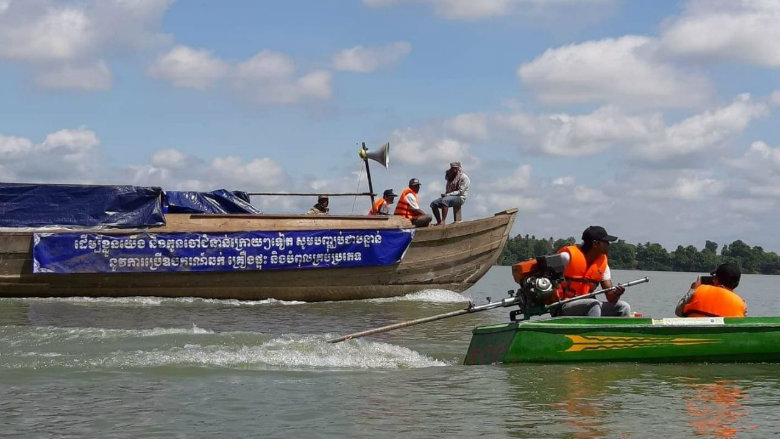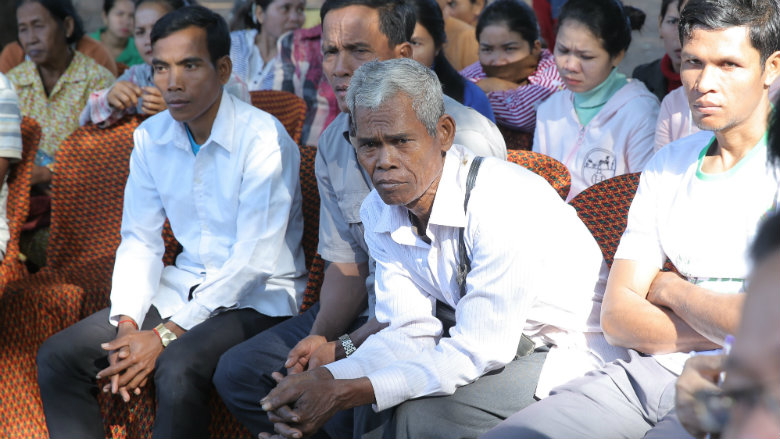Sitting in the front row at a community meeting with dozens of people, 66-year-old Chhoun Nem listened carefully to a question a fellow participant asked about why it has taken so long for villagers to actively engage in community fisheries.
Suddenly, Nem stood up and responded, “We all need to wake up now to save our endangered fish species. There are a lot of illegal fishing activities here. If we are all still in a sleep, we will no longer have any fish left for our young generation.”
Nem is a member of Pong Toek Community Fisheries in O’Rey Commune, Thala Borivat District of Stung Treng province along the Upper Mekong River. This community fishery was established to crack down on illegal fishing activities and preserve endangered fish species.
Another member of Pong Toek Community Fisheries, Tey Meth, 63, who lost his left leg during the civil war in early 1990s, echoed Chhoun Nem’s sentiment about illegal fishing activities in their village.
“Despite the fact that I cannot join the patrol team on the boat in the river to catch the illegal fishing boats, I keep reporting any illegal acts to our team when I see them,” he said.
Tum Nyro, head of Stung Treng Provincial Fisheries Containment, shared his concerns over the severe decline of fish due to illegal fishing activities at the deep poles of the Upper Mekong River during dry season. Deep poles are the spawning ground of the endangered fish species, including Irrawaddy dolphins.


